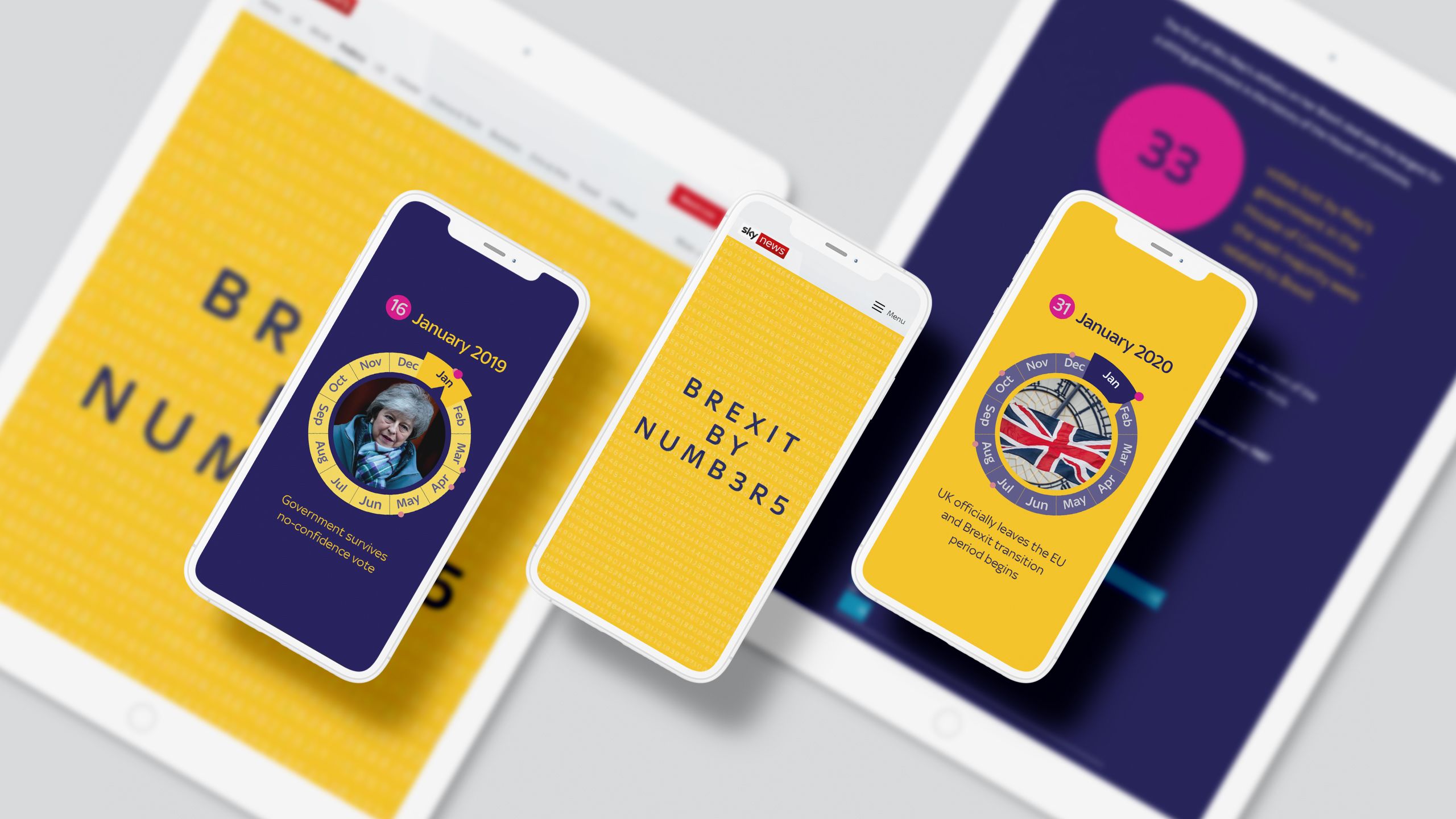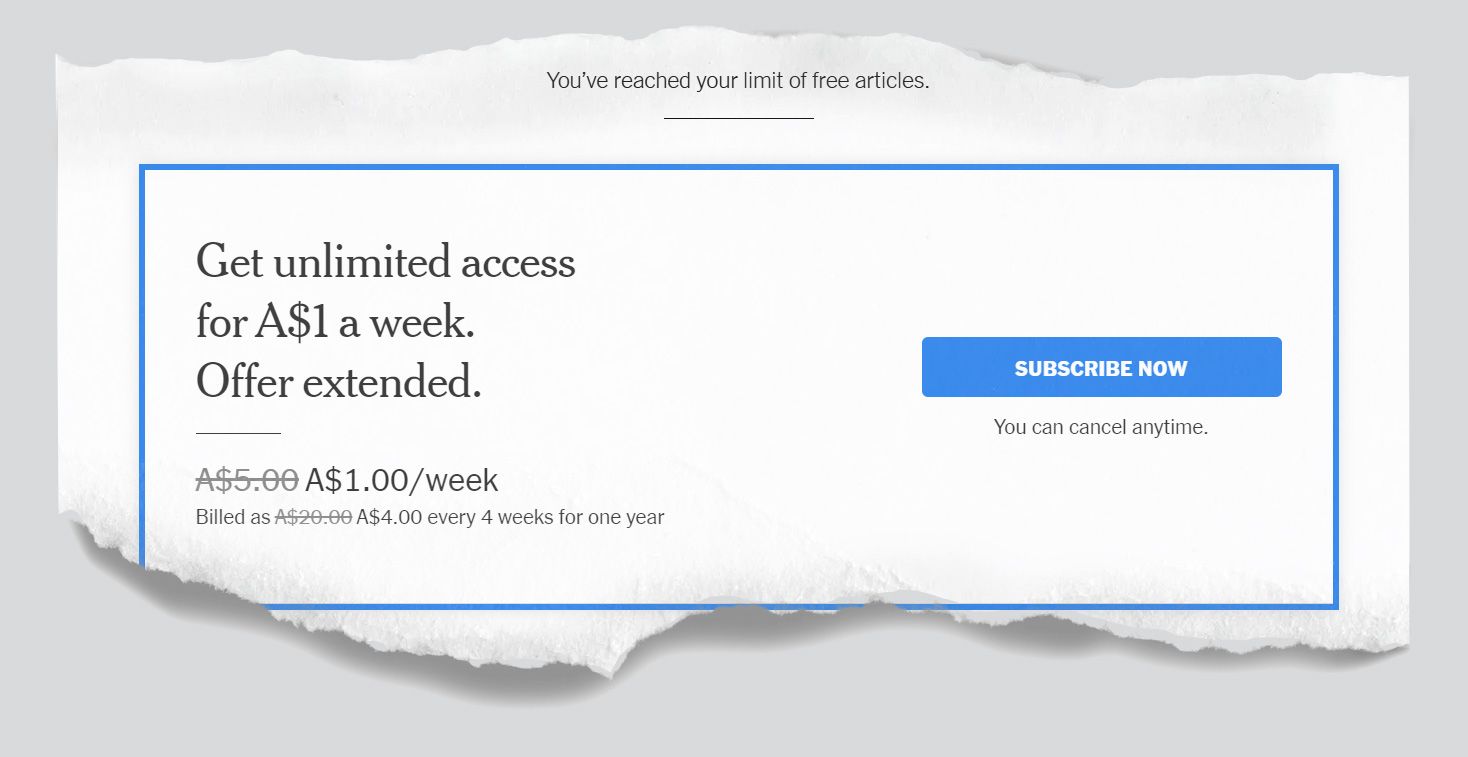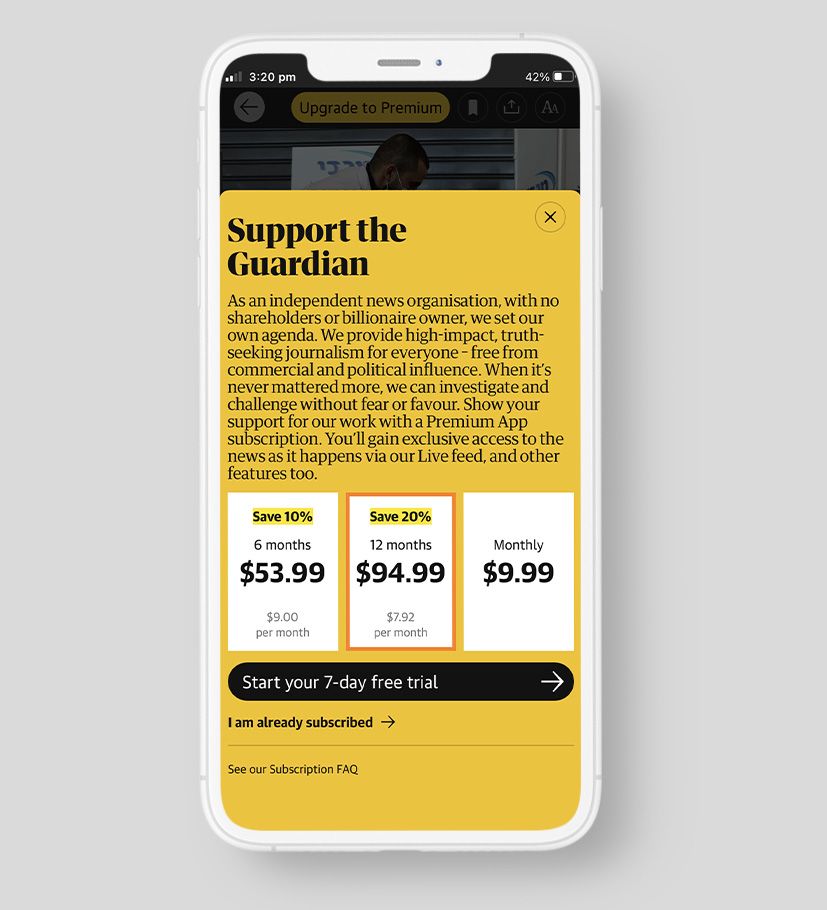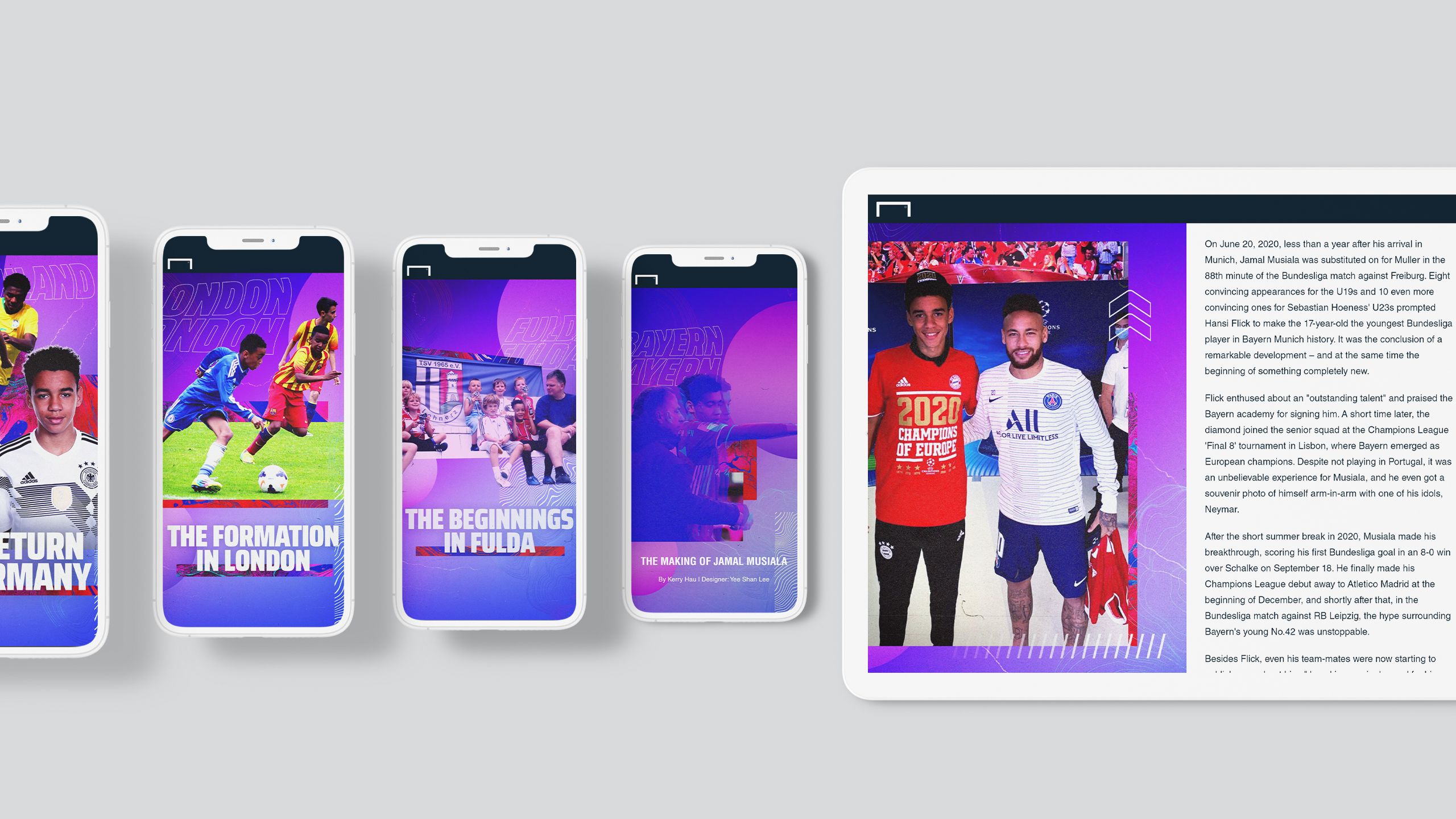
How to start a paywall
It’s easier than ever to paywall your content. But before you do so, you need to make sure you can produce content that is worth paying for — and produce it at scale.









When most people think of content paywalls, they think of major newspapers and magazines such as the New York Times. But paywalls are becoming increasingly common for content providers of all stripes, from niche publications to author newsletters.
As it becomes technically easier — and cheaper — to implement a paywall, many content producers are now considering it as an option. But there's a lot to think about before deciding on your paywall strategy.
In this guide, we’ll run through:
- What is a paywall?
- Paywall business models
- Paywalls and content quality
- Why paywalls are becoming more popular
- Types of paywall
- How to choose a paywall model
- How to choose a paywall provider
If you're looking to learn more about how to generate revenue from your content, check out our guide to content monetisation.
First, though, let's start at the beginning: what is a paywall?
What is a paywall?
A paywall restricts access to online content to paying subscribers. As we discuss in detail below, there are many different kinds of paywall, ranging from relatively liberal metered paywalls to much more restrictive hard paywalls.
Paywalls are a way for content providers to monetise content published on the web, and have become an increasingly common business model for digital publishing.
For many publishers, paywalls are an alternative to advertising-driven business models. With an audience of digital subscribers, publishers can become less reliant on 'clicks' and can instead focus on the production of quality content.
Looking for a list of the best paywall providers? Check out our roundup of the best paywall providers for your content business.

Paywalls and content business models
This is going to sound… harsh, but ‘quality’ hasn’t always been the modus operandi for digital publishers on the web.
It wasn’t too long ago that the dominant business model on for digital media was ‘more eyeballs,’ driven by the hope for significant digital ad revenue. This led to a deluge of poorly conceived, poorly written, and poorly edited clickbait.
This model was terrible for readers — but it wasn’t great for online content providers, either. Aside from a few online behemoths, the promise of digital advertising never really eventuated, and many media brands (along with their readers) have endured an unfortunate race to the bottom.
You can read more about this dynamic in our article on the attention economy and the rise of longform journalism, Can I have your attention, please?
We are, fingers-crossed, nearing the end of that race. With new proven digital subscription business models — including paywalls and membership subscriptions — content producers now have the chance to get free of the exhausting hamster wheel of chasing clicks and page-views.
But here’s the catch: for these business models to work, content teams need to produce content that is worth a paid subscription — and they need to do so at scale.

Paywalls only work with quality content
As some online media properties have discovered, subscription models do not easily operate alongside more high-volume, click-bait (or click-bait-adjacent) models. The reason for this is obvious: subscribers won't pay for an inferior product.
Paywalls only work with premium content.
The upshot for content producers is this: if you want to generate revenue from paying subscribers, you'll need to invest in making it great. This will require an investment in the entire content process, from strategy, to research, writing, editing, and production.
In a digital age, this means not only longer, better written content. It also means fully responsive, visually stunning content, with excellent and effective media assets, such as data visualisations and interactive infographics.
Simply put, subscription content cannot look like every other piece of content on the web. It has to look special. And this is where digital storytelling comes in.

Paywalled content and digital storytelling
Digital storytelling is an umbrella term for immersive, interactive content published to the web.
Over the last decade, digital storytelling has emerged as the dominant way of publishing immersive and interactive web content. Everything from feature stories and watchdog journalism from the BBC, match reports from Manchester City, and annual reports from Habitat for Humanity have been published as digital stories.
You can see examples of the best digital stories in the world on our Featured Stories page.
Digital stories look to make the most of today’s powerful web browsers, often using techniques like scroll-based animation, rich media, and parallax scrolling. Here’s an example (not paywalled) from Sky News, which tells the story of the real impact of Brexit on the United Kingdom.


Pioneered by leading media brands like the New York Times and the BBC, digital storytelling is now used by leading content teams across every industry, from higher education to professional sports.
Some digital stories are built by teams of developers and web designers, while others are made using no-code (or code-optional) platforms.
Digital stories have become common for paywalled content because they allow content producers to produce stunning content — that is, content that people are willing to pay for — at scale.

Why are paywalls becoming more popular?
Paywalls have become more popular for three reasons.
First, digital advertising — the predominant business model for content on the web — simply doesn’t generate enough revenue. People rarely click on banner ads, which mean that sites need to generate millions of page-views to earn even a small amount of revenue.
Second, web technology has improved. Paywall technology providers are better than they were. They’re easier to implement, and much harder to circumvent. It’s also become much easier to securely receive and manage subscription revenue on the web.
Third, the proof has been in the pudding: paywalls work. There are plenty of businesses these days proving that subscription models can enable the monetization of content.

Types of paywall
While the term ‘paywall’ sounds self-evident, there are actually several different types of paywall. Some are grand enough to keep out the White Walkers, while others are as porous and inviting as suburban picket fences.
Your choice of paywall will depend on the size of your existing audience, your reputation for quality, and the topics and industries you cover.
The metered paywall
The metered paywall or 'soft paywall' — sometimes also called the freemium paywall or freemium model — will be familiar to anyone who reads the occasional article on the New York Times or Financial Times. This paywall allows readers to sample a certain number of articles a month, before the hard paywall takes effect.
The metered model is a good way to showcase the quality of your content without giving away your entire product for free. Metering is best for companies that produce a significant amount of new content, and aren’t worried about the long tail of free readers who’ll dip in and out for their monthly content allowance.

The dynamic paywall
A variation on the soft paywall is the dynamic paywall. This allows content producers to use more sophisticated subscription offers to drive subscriptions, with the offer changing dynamically depending on reader behaviour and geography.
Some readers, for example, may be asked to create an account to access a limited number of free articles, while others may be immediately asked to sign up to a paid account. Dynamic paywalls can also create separate rules for readers in different countries (a tactic famously implemented by Slate for international readers in 2015).
The hard paywall
The hard paywall is precisely what it sounds like: an impenetrable wall that requires readers to have a subscription to access any content whatsoever. This kind of paywall is common with extremely well-established brands — such as British newspaper The Times or The Wall Street Journal — or for finance-sector publications. Hard paywalls can also succeed for niche content that has a built-in audience.
It's worth noting that any one of these paywall models will likely lead to a drop in readership. If you want to monetise your content, though, without losing your readership, there is one remaining option.

































The membership model
The membership model has become a popular option for publications that, well, don’t really want a paywall, but still want to generate revenue directly from their readers. Less a ‘wall’ than a see-through fence allowing free access to digital content, the membership model has proven effective with publications with a strong mission.
The most famous example of a membership model is The Guardian, which used its membership model — in part, at least — to turn around a cumulative loss of £227 million over seven years to make a small operating profit.
Smaller publications, such as New Zealand’s Stuff, have also pursued this model, alongside other strategies such as native advertising and sponsored content.
Membership-based publications use many of the same techniques as the dynamic paywall, including personalising the ‘ask’ at the bottom of each story. In some cases, the ‘ask’ becomes longer and more intrusive, the more articles you read — but it remains just that: an ask. Readers can continue to read all major content pieces for free, as long as they don’t mind scrolling past the ask at the end of the story.

Often, membership-based publications will offer some free content — The Guardian offers access to crosswords; Slate offers ad-free podcasts and other bonus content. Generally, though, the flagship content remains free to all and sundry.

How to choose a paywall model
Before you decide which paywall model to implement, you need to gather as much information as you can about your existing content business. Here are 7 parts of your business you’ll want to focus on in particular:
- Your existing content pipeline. Most paywall models are subscriptions — and subscriptions can be easily cancelled. To maintain a subscription business, you need to make sure you can produce high quality content that is worth paying for, week in, week out. And you’ll also want to make sure that you know the costs of producing quality content at scale, including developer, designer, and technology costs. If you’re interested in using a digital storytelling platform to scale your work, check out our guide here.
- Your competitor landscape. Readers don’t subscribe to content in a vacuum. They’re less likely to pay for your content if the content business across the proverbial road is giving away similar content of the same quality for free.
- Your current reader acquisition channels. Paywalls have one major downside: they can be bad for SEO. They often lead to a higher bounce rate, and hard paywalls can make it difficult for search engines like Google to properly index content in the first place. If your business is dependent on search, make sure you follow Google’s documentation, and perhaps run a limited trial, before implementing a paywall.
- Cannibalisation of revenue. In this guide, we’ve repeatedly pointed to the limitations of digital ad revenue. Nevertheless, a paywall is going to eat into this revenue stream, and it’s worth modelling out this change before you proceed.
- The loyalty of your readers. Some content brands have extremely loyal readers, usually because they are strongly mission-driven. Of course, every publication has its fans, but it’s worth doing an honest appraisal of your real-world brand reputation before committing to a paywall model.
- Your audience demographic. As mentioned above, the most successful ‘hard’ paywalls are found in the business and finance sectors. This is because people working in those industries depend on the latest news and analysis for their livelihood. This is less true for publications covering, say, popular culture or consumer goods.
- Your mission. If your organisation wants your content to have a strong impact in the world — and not just on your bottom line — then a paywall might not always be the best idea, for the simple reason that fewer people will access your content.

How to choose a paywall provider
Once you’ve chosen your paywall model, you’ll want to work with a paywall provider to run through your implementation options. There are plenty of options these days, and most vendors can integrate relatively easily with your existing publishing technology stack.
Before you choose a vendor, though, you’ll want to consider the following:
- Does this vendor support my paywall model?
Not all paywall providers offer the full suite of paywall models. - How does it integrate with my publishing stack?
This may depend on your in-house development resources, but it ought to be — and often is — relatively painless. - How will I manage subscriptions?
You’ll want to ensure that your paywall service allows you to charge your readers as you see fit. You’ll also want to ensure that it connects to your CRM.
- How much does it cost?
There are several different pricing models for paywall providers, from a monthly subscription to a percentage cut of revenue. Model the total cost of your provider before committing to a solution.


Final thoughts
Content business models are complicated. There are many different variables to consider, and some of the most important — such as how content consumption will change in the future — are impossible to predict.
One thing is certain, though: successful content paywalls require high quality content that people want to pay for. These days, the most well-received content typically includes interactive elements, scroll-triggered animation, and rich media assets.
Take, for example, this (not paywalled) story from Goal.com on the rise of Bayern Munich football star Jamal Musiala.

If you’re interested in creating stories like this at scale — without writing a line of code — get started with Shorthand today.